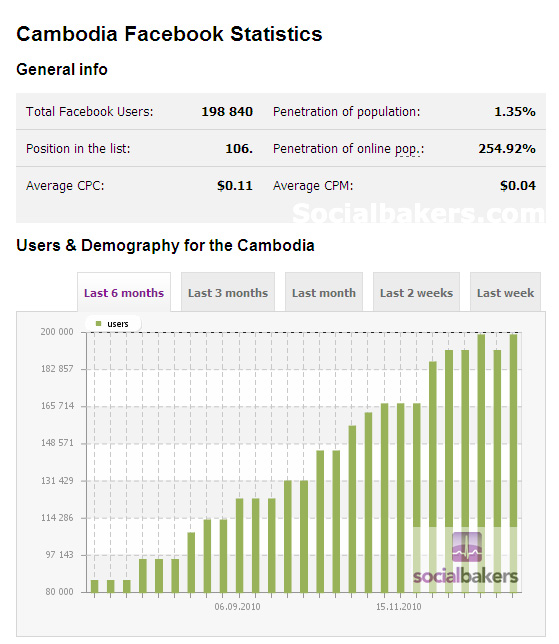Soeung Sophat (Washington, D.C.) and Bun Tharum (Phnom Penh)
When an earthquake and tsunami hit Japan on March 11, Cambodian students in Japan found themselves in a frightening situation. But through social media and other communications, most students were able to check on each other during and after the quake.
When the shaking ended, all of the students were accounted for. Except one. Tea Seang Houng. The search for Tea Seang Huong by her friends demonstrates the important role social media and the Internet have come to play for Cambodians around the world.
Tea Seang Houng, who had been in Japan since March 2010 and was studying to be a translator, left Tokyo on March 9 to visit her host family on the northeast of the island of Honshu. Before she left, on March 7, she updated her Facebook profile, telling 309 friends, in Chinese (according to Google Translate): “A couple of days I can go to Sendai. Unfortunately, this is not holding the mood to travel. Anyway, hope this trip will be harvested [fruitful] in Sendai.”
On March 8, a friend replied, in Japanese, “You be careful!”

Seang Hourng's message in Chinese language for her Facebook friends, telling them about her visit to Sendai.
At 2:46 pm on the afternoon of March 11, a massive earthquake began off the northeast coast of Honshu—130 kilometers east of Sendai city, which sits on the eastern edge of the Eurasian Plate, whose geological collision into the Pacific Plate triggered the earthquake.
The quake, a magnitude of 9.0 on the Richter scale, triggered a tsunami, a massive wall of water 10 meters high that swept across Honshu’s northeastern coast. The tsunami devastated the entire region, including Sendai, leaving 1.15 million households and businesses in and around the city of 500,000 without power or water, according to the city government. The earthquake shook buildings across the island, including in Tokyo.
More than 200 Cambodian students in Japan experienced the quake, and Facebook became a main source of information for them.
“Huge earthquake!!” Chea Poleng, vice president of the Cambodian Student Association in Japan, typed on her iPhone just after the earthquake. “First experience escape from earthquake >< so scare!!” Later that evening, the 29-year-old economics student at Tokyo’s Hitotsubashi University wrote: “almost no breath when watching the confusing everywhere in japan! Pls keep alert and announce urself safe all friends here!”
Also that night, a Cambodian student in Hong Kong, Sreng Nearirath, reported on Facebook: “one of Cambodian students named Ms. Tea Seng Huong was spending her time at the host family in the hardest-hit Sendai and now could not be contacted according the email of the Cambodian Student Association in Japan (CSAJ) :(“
By then, news of the disaster was well known worldwide. Footage of the tsunami as it swept houses, cars and debris inland was broadcast on major news outlets. Many worried than Tea Seng Huong had perished in the disaster.
She did not. She survived.
Tea Seang Huong, who is 27 years old, was in a grocery store parking lot when the earthquake hit. She had been shopping in an underground supermarket with friends but had been unable to find what she was looking for. They were on their way to another store when the earth began to shake.
“The shake was like we’re running over a big hole,” she told VOA Khmer later. “My Japanese friend told me to open the car doors, but stay still. In front of me, I saw a vehicle shaking. After half an hour of the quake, aftershocks continued slightly, and it was showering, so we got out of the car. I saw a billboard had fallen on the ground, and the ground was torn apart. I therefore felt terribly shocked.”
“When I was in the parking lot, I sent a text message via mobile phone to one of my friends in Tokyo,” she said in a phone interview.
That single text message was passed on through a network of friends and ultimately on through a Facebook network.
In Hong Kong the following day, Nearirath Sreng posted on Facebook: “We have received confirmed information from Seang Houng’s family that she is safe now..Thanks God.”
Since Sendai was hardly hit, she may not be have access to internet or mobile phone… and she may not remember our number except her family’s number in Cambodia. As we have known Japanese mobile number are very long and hard to remember.”
Modern communications had helped reassure Tea Seng Huong’s friends and family she was all right.
By then, March 12, Japan was still struggling to come to grips with the scale of the disaster. In the days to come, rescue efforts would find few survivors and the death toll would reach in the thousands. Today, international attention is on a series of nuclear reactors whose cooling systems were damaged in natural disaster.
Tea Seang Huong is safe for now, though Japan is still struggling to recover.
On March 15, just after 1 pm, she was back on Facebook. “Dear friends,” she wrote, in English this time. “I’ve just arrived Tokyo n my home. Thank you very much for your warm wishes n also very sorry to let you all worrying about me. it was a hard experience for me, but m very happy n feel luck to b safe. contact u again later.”
Recommended web links:
Cambodian Students Shaken, But Unharmed in Quake
Cambodian Student Association in Japan
Resources related to the 2011 Japan Crisis
Stoicism Amid Disaster: Japanese Region Quietly Grinds to a Halt
Video: Japan Earthquake Swarm Google Earth Animation
In pictures: Returning to a Nightmare in Japan


















 Radio Podcasts
Radio Podcasts YouTube
YouTube Facebook
Facebook Twitter
Twitter Google+
Google+ Angkor One
Angkor One RSS
RSS Subscribe to Email Alerts
Subscribe to Email Alerts Mobile Version
Mobile Version